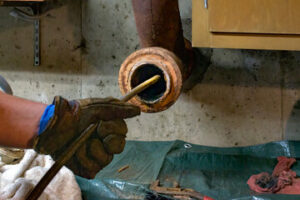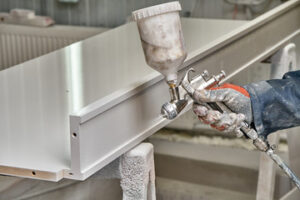Drain Cleaning Perth is an essential part of maintaining a healthy and efficient plumbing system in any home or establishment. Over time, the drains in sinks, showers, and other fixtures can accumulate a variety of debris, including grease, soap scum, hair, and food particles. These build-ups often go unnoticed until they begin to create problems, such as slow drainage, foul odors, or complete blockages. By addressing these issues through proper cleaning, one can eliminate symptomatic problems and prevent future clogs, ensuring the plumbing system remains functional and hassle-free.

The importance of clean drains cannot be overstated. One of the most obvious benefits is the immediate resolution of drainage issues. When water begins to pool in sinks or showers, it is often a sign of an obstruction somewhere in the pipes. These blockages can result in inconvenient and unsanitary conditions, such as stagnant water and unpleasant odors. Professional or DIY drain cleaning methods effectively remove these obstructions, allowing water to flow freely once again. Beyond solving these visible issues, regular drain cleaning also addresses less noticeable problems that could worsen over time.
Preventing future clogs is another critical aspect of drain cleaning. Many people only think about their drains when a problem arises, but proactive maintenance can save significant time, money, and frustration in the long run. Regularly removing debris and buildup from drains reduces the risk of future blockages, ensuring that the plumbing system operates efficiently. This proactive approach minimizes the likelihood of severe clogs that may require costly repairs or even pipe replacement. It also reduces wear and tear on the plumbing system, as water pressure caused by blockages can damage pipes over time.
One of the lesser-discussed benefits of drain cleaning is its role in preventing foul odors. Drains that are not cleaned regularly often develop an unpleasant smell caused by decaying organic matter trapped in the pipes. These odors can seep into living spaces, creating an uncomfortable and unhygienic environment. Cleaning drains removes this debris, eliminating the source of the smell and restoring a fresh atmosphere. For households and establishments that prioritize cleanliness, this aspect of drain maintenance is particularly important.
Drain cleaning also helps maintain a safe and sanitary environment. Clogged drains can become breeding grounds for bacteria, mold, and pests, all of which pose health risks. Stagnant water trapped by blockages is a prime location for harmful microorganisms to thrive. By keeping drains clean, one can minimize these risks, ensuring that the plumbing system contributes to a healthy living or working space.
Several methods can be employed for drain cleaning, ranging from simple DIY solutions to professional services. Home remedies, such as using baking soda and vinegar or a plunger, are often sufficient for minor clogs. For more stubborn blockages, tools like drain snakes or augers may be necessary. Professional drain cleaning services offer advanced solutions, such as hydro jetting, which uses high-pressure water to thoroughly clean pipes. Regardless of the method chosen, regular maintenance is key to preventing issues before they escalate.
While cleaning drains is crucial, it is equally important to adopt habits that prevent debris from entering the plumbing system in the first place. Using drain covers to catch hair and food particles, avoiding pouring grease down the sink, and being mindful of what is flushed or washed down the drain can significantly reduce the likelihood of clogs. Combined with routine cleaning, these preventative measures create a comprehensive approach to maintaining a healthy plumbing system.
Another advantage of regular drain cleaning is the extension of the lifespan of the plumbing system. Pipes that are consistently free of blockages experience less stress and are less likely to develop cracks, leaks, or corrosion. This not only reduces repair costs but also enhances the overall efficiency of the system. In addition, clean drains contribute to better water pressure and drainage speed, improving the user experience in daily activities such as washing dishes or taking showers.
For property owners, drain cleaning is also a valuable investment in property maintenance. Plumbing issues can lead to water damage, which may affect walls, floors, and other structural components. Addressing clogs promptly and maintaining clean drains help protect the integrity of the property, preserving its value over time. This is especially important for those planning to sell or rent their property, as a well-maintained plumbing system is a key factor in attracting potential buyers or tenants.
Drain cleaning is not just about solving problems but also about fostering a mindset of preventive care. By taking a proactive approach to maintenance, individuals can avoid the stress and inconvenience that often accompany plumbing emergencies. It also encourages a greater awareness of how daily habits impact the plumbing system, promoting more responsible usage and reducing the likelihood of clogs.
Neglecting drain cleaning, on the other hand, can have serious consequences. Persistent clogs may lead to pipe bursts, water backups, or even flooding, resulting in significant damage and costly repairs. In extreme cases, untreated plumbing issues can compromise the structural integrity of a building. These scenarios highlight the importance of addressing even minor drainage problems promptly and consistently.
While drain cleaning may seem like a mundane task, it is an essential aspect of home and property care that yields numerous benefits. It resolves symptomatic issues, prevents future clogs, eliminates odors, and promotes a clean and healthy environment. With the availability of various cleaning methods and preventive measures, maintaining clean drains is a manageable task that pays off in the long run. Whether through professional services or regular DIY maintenance, investing time and effort in drain cleaning ensures that the plumbing system remains efficient, reliable, and problem-free.

